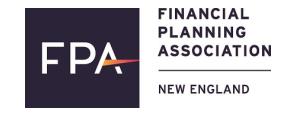Advisors Raise Their Profile By Sending Newsletters
BY MOREY STETTNER, FOR INVESTOR’S BUSINESS DAILY
In the 19 years since Bill Harris co-founded a financial advisory firm, he has learned the value of patience in attracting clients. He uses his monthly e-newsletter to maintain contact with prospects.
“In this business, you can know somebody for 10 years, and then they become a client,” said Harris, a certified financial planner in Duxbury, Mass. “With a newsletter, you keep putting content out there for them and hope that it comes back to you.”
Many advisors market themselves by collecting email addresses from friends and acquaintances, and then sending them a newsletter on a regular basis. By providing newsy tidbits and timely financial advice, advisors can boost their visibility and reinforce their expertise.
But writing newsletters takes discipline. Advisors need to stick to a schedule in producing the newsletters, choose topics that recipients find interesting and continually expand their email distribution list.
“It’s a great way to stay in touch with our audience,” said Harris, co-owner of WH Cornerstone Investments. “It’s always interesting to see how many click-throughs we get for different articles.”
Harris launched the newsletter in 2003 with his wife, Paula, the firm’s other co-founder. Their newsletter reaches more than 1,200 subscribers.
In addition to sharing financial insights and links to personal finance articles, the Harrises write about their travels and personal musings. For example, Paula described a 30-day action plan that she intended to follow to simplify her life — and invited readers to do the same.
Catchy Subjects, Design Tips
Bill Harris says that 35% of recipients open the newsletter. The average “open rate” for marketing emails falls between 15% and 25%; he cites two reasons for his above-average results.
Emailing once a month works well, he says, because “you might lose people if you send it too much.” He can commit to producing content for each issue because he writes a monthly column for a local newspaper, and he repurposes the material for his newsletter.
He also writes catchy subject lines that draw attention. He finds that “numbers get more viewership” — for instance, “Eight ways to simplify your finances.”
Readers like a mix of financial and folksy content, Harris says. While he writes the pieces about money and investing, Paula offers book recommendations, travel updates and lifestyle pieces.
“It helps that we put real pictures in our newsletter, not stock photos,” he added.
While Harris prefers sending a monthly newsletter, Marc Freedman has found success sticking to a weekly schedule. Readers seem to welcome the frequency and predictability of each issue, says Freedman, a certified financial planner in Peabody, Mass.
“For the last six-and-a-half years, it has come out at exactly 10:30 a.m. Eastern time every Friday,” Freedman said. “That helps us develop a following of people who think, ‘I should contact Marc. I know I’ll get his newsletter on Friday, so I’ll reply then.'”
Both Harris and Freedman use Constant Contact, an email marketing firm that provides design templates and support to small businesses that send newsletters. Freedman, who has roughly 6,000 subscribers, says that he pays $750 a year to Constant Contact.
“Constant Contact has graphic specialists who advise us on the best color palette,” he said. “We changed the design two years ago to freshen it up, and now we have two or three stories of no more than 100 words each.”
Staying In Touch
Of Freedman’s 6,000 subscribers, about 500 are clients. The rest include locals who are familiar with him and his firm. He also trains financial advisors and gives presentations on financial topics, and he invites audience members to subscribe.
He teams with a few staffers to plan and write the content. Each week’s issue takes about two-and-a-half hours of his time.
“It’s well worth it, because consistent communication to clients, prospects and other professionals leads to impulse responses when people need us most,” Freedman said. “They impulsively reply to my newsletter and say, ‘Hey, can you help me with this?'”
Freedman launched his newsletter in March 2009 as the market hit bottom after a six-month plunge. He figured that clients needed reassurance and perspective.
“It was a scary time, and people were depressed,” he recalled. “I decided to push the newsletter to all my clients with positive but honest information. So instead of calling my clients, I sent them my thoughts in the newsletter and left it up to them to react on their terms. I thought that if they read it and wanted to reach out to me, they could.” And they did.
